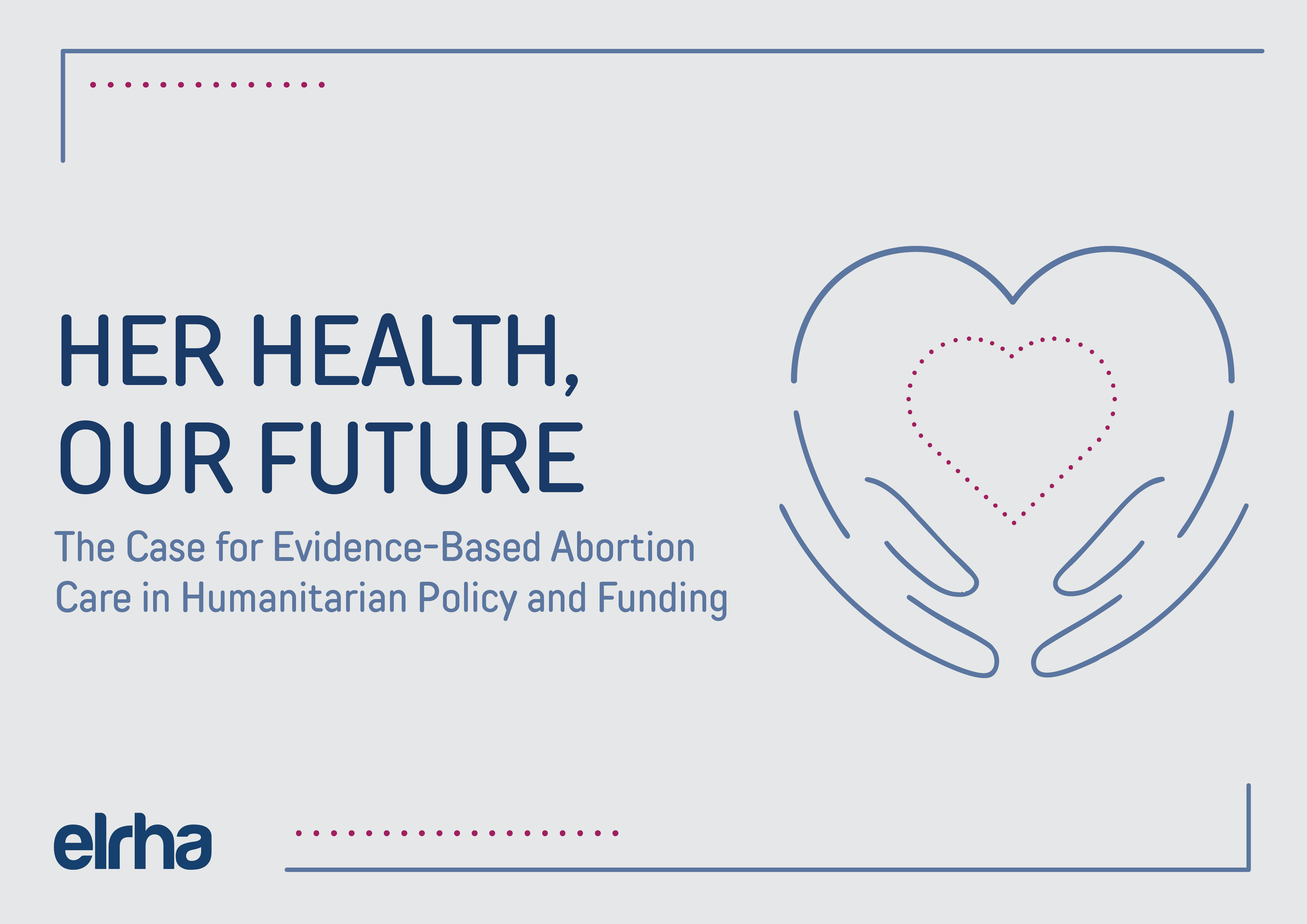Her Health, Our Future: The Case for Evidence-Based Abortion Care in Humanitarian Policy and Funding

The case for tackling an entirely preventable cause of maternal death
Women and girls in humanitarian crisis settings face both increased risks of unintended pregnancy and barriers to safe reproductive care. Unsafe abortion is the only cause of maternal death that is completely preventable1 – yet it accounts for 7.9% of maternal deaths globally and up to 25 to 50% in refugee settings.1,2 Safe abortion care remains largely absent from humanitarian health responses, despite clear evidence of both urgent need and effective solutions.
This policy brief draws on robust evidence to define key terms and concepts, assess the scale of need for safe abortion care in humanitarian settings, review the policy and legal context, explore proven, scalable and affordable solutions and provide high-level policy recommendations. It is a clear call to action for humanitarian policymakers and coordinators operating at global, national and field levels (including governments), donors and humanitarian health-implementing organisations. Alongside ensuring access to contraception to prevent unintended pregnancy, safe abortion care must be recognised as a humanitarian priority.
Why we need to take action now
Humanitarian contexts face extreme challenges – limited resources, donor restrictions, political sensitivities and fragile health systems. Yet these very constraints make abortion care indispensable. When 84% of women resort to unsafe methods,3 the cost of neglect far outweighs the modest investment required to prevent complications. Unsafe abortion consumes scarce emergency resources, whilst proven innovations – self-managed abortion (SMA), community distribution, rapid training – offer low-cost, scalable solutions that save lives and preserve health system capacity.
Women and girls make up half of crisis-affected populations. They deserve the same rights and health protections as anyone else. The evidence, tools and legal obligations already exist – what remains is the will to act.
What must be done
Alongside ensuring access to contraception so that women and girls can prevent unintended pregnancies, humanitarian actors must strengthen the provision of safe abortion care. Governments must clarify and implement legal frameworks that enable abortion care, lead by example in funding and policy, and recognise reproductive rights in emergencies as both a legal duty and a measure of humanitarian leadership. Community-led solutions must be prioritised and resourced.
Donors must provide unrestricted funding in line with international law and medical standards, diversify resources for sustainability, and ensure women’s Sexual and Reproductive Health (SRH) needs – including safe abortion – are explicitly supported and measured. Community-driven initiatives must be central.
NGOs must fully implement the Minimum Initial Service Package (MISP) for SRH (priority SRH activities, including comprehensive abortion care)4 and integrate abortion care as standard practice in humanitarian health services.
They must also train staff through values clarification and attitude transformation (VCAT) and SRH Clinical Outreach Refresher Trainings (S-CORT).5 Adopting innovative, community-adapted models – including SMA support, community-based distribution and digital health interventions – is also essential.
Lastly, NGOs must allocate sufficient resources, champion women’s rights and use their influence to unify stakeholders around evidence-based strategies.
UN agencies must also ensure full implementation of the MISP, ensure essential reproductive health supplies are present in emergencies and leverage their convening power to integrate abortion care into humanitarian coordination. They must also hold governments accountable to their international obligations.
The evidence is clear, and the moral imperative undeniable: safe abortion care saves lives, protects human rights, and strengthens public health in humanitarian crises. Every day of inaction leads to preventable deaths, unnecessary suffering and violations of rights. The humanitarian community cannot continue to exclude half the population from essential, life-saving healthcare.
What is needed now is decisive, collective action.
References
- Say L, Chou D, Gemmill A, Tunçalp Ö, Moller AB, Daniels J, et al. Global causes of maternal death: a WHO systematic analysis. Lancet Glob Health. 2014;2(6):e323-e333.
- Sudhakaran S, Barnhart DA, Powell B, Fetters T, Jayaweera R, Gerdts C, et al. Maternal mortality due to abortion complications in forcibly displaced populations: A study protocol for a community-facility capture-recapture (CFCR) study. PLOS One. 2025;20(1):e0315182.
- Jayaweera R, Odhoch L, Nabunje J, Oduor C, Zuniga C, Powell B, Barasa W, et al. Incidence and safety of abortion in two humanitarian settings in Uganda and Kenya: a respondent-driven sampling study. eClinicalMedicine. 2025;83:103200.
- Inter-Agency Working Group on Reproductive Health in Crises. Inter-agency field manual on reproductive health in humanitarian settings. 2018. Available: https://iawgfieldmanual.com/
- Tran NT, Dawson A, Meyers J, Krause S, Hickling C. Strengthening healthcare providers’ capacity for safe abortion and post-abortion care services in humanitarian settings: lessons learned from the clinical outreach refresher training model (S-CORT) in Uganda, Nigeria, and the Democratic Republic of Congo. Conflict Health. 2021;15:25.